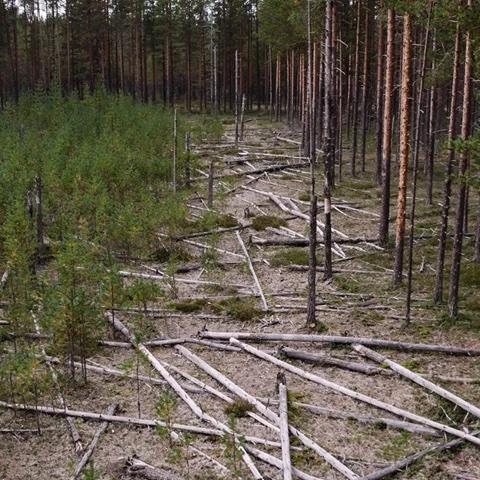North Sweden in talks with the European Commission on the Deforestation Regulation and forest growth in the north

On April 9, North Sweden's Gölin Carina Christiansen and Jenny Hammersland met with the European Commission to discuss the Deforestation Regulation. From the European Commission, Gábor Lovasi, Policy Officer at the Directorate-General for the Environment, and Jesús Maria Alquézar Sabadie, Analyst at Directorate-General for the Environment, participated in the meeting. During the meeting, issues related to the implementation of the Deforestation Regulation were discussed, which will come into force in January 2025.
Although the legal text is written and the regulation has been voted on, there is still work to be done. Many questions remain, especially around the definition of forest degradation, primary forest, and whether a harvested so-called primary forest can be replanted. The requirement for exact traceability down to parcel level and date of felling linked to products such as pulp, sawdust, chips and pellets was also discussed.
The meeting also included questions regarding continuous cover forest harvesting methods. Gölin Carina Christiansen pointed out that continuous cover forest harvesting methods do not always work well in northern Sweden with our northern boreal forests with a great quantity of spruce and pine.
These methods, often promoted by the European Commission, may include that large machines must enter the forest more often to harvest the large mature trees, that is selecting individual trees from a large area. This is done perhaps between every five and 20 years, instead of after about 100 years with current standard forestry practices.
In addition to increased transportation costs, this means that large roads where large machines may be driven must be kept open inside forestry areas at all times. Repeated driving with large machines also risks damaging the more superficial roots of spruce trees, which can lead to rot in the tree. Also, the risk of mechanical damage on growing trees are increasing with repeated driving.
Furthermore, Gölin Carina Christiansen highlighted the fact that small trees do not grow well near large trees, which is also reported in research recently presented by the Swedish University of Agricultural Sciences, SLU.

In addition to the fact that pine plants need a lot of light to continue growing, the research shows that large trees are reluctant to share soil nutrients with small plants. Open areas with plenty of light and no competition from large trees seem to suit the small plants better.
The study shows that the growth of young new trees near older trees is more challenging in northern Europe than elsewhere. Further south, the same phenomenon is not seen as more forest regeneration occurs in forest gaps.
Overall, the research shows that the challenges may be greater for continuous cover forest harvesting methods practices in our northern forests. Therefore, it is important that the Deforestation regulation and other EU legislations on forest consider the different forest types of member states for the legislation to work in reality.
North Sweden's work on the Deforestation Regulation
North Sweden has worked actively with the deforestation regulation and has participated in several dialogues, both for Europaforum Northern Sweden (EFNS) and for Northern Sparsely Populated Areas (NSPA). Among other things, the NSPA network organized a seminar in October 2023 where EU decision-makers, experts and forest industry stakeholders from several countries reflected on the possible consequences of the regulation on trade in forest biomass.
In January this year, NSPA also sent a letter to the Commissioner for Environment, Maritime Affairs and Fisheries, Virginijus Sinkevičius. The letter requested that the northern forest industry and the one million forest farmers in Sweden, Finland and Norway will be considered in the implementation of the deforestation regulation. The letter had an impact and the reply from Virginijus Sinkevičius stated that the European Commission is ready to back down on geolocation requirements.
Furthermore, on February 8, North Sweden participated in a meeting between Sweden's northern regions and Helena Braun from the European Commission, whose areas of responsibility include circular economy, biodiversity and forestry issues. During the meeting, the regions had the chance to ask questions about the deforestation regulation and further clearly address the importance of forests for the local economy in northern Sweden and their long history in the industry.
/Jenny Hammersland
Read more about SLU's latest research on forests here (in Swedish)
Read more about North Sweden's and NSPA's work on the regulation here (in Swedish)
Read NSPA's letter to the European Commission here
Read more about the Europaforum Northern Swedens position paper on the European Commission's proposal for the deforestation regulation here
